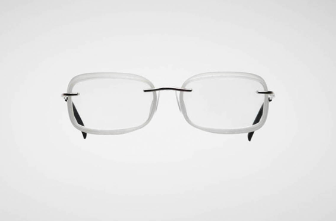Isolation of the Ocular Surface to Treat Dysfunctional Tear Syndrome Associated with
Computer Use
Richard W. Yee, MD, Harry G. Sperling, PhD, Ashballa Kattek, MD, Martin T. Paukert, Kevin Dawson, Marcie Garcia, and Susan Hilsenbeck, PhD. The Ocular Surface October 2007, Vol. 5, No. 4 / www.theocularsurface.com
ABSTRACT Dysfunctional tear syndrome (DTS) associated with computer use is characterized by mild irritation, itching, redness, and intermittent tearing after extended staring. It frequently involves foreign body or sandy sensation, blurring of vision, and fatigue, worsening especially at the end of the
day. We undertook a study to determine the effectiveness of periocular isolation using microenvironment glasses (MEGS™) alone and in combination with artificial tears in alleviating the symptoms and signs of dry eye related to computer use. At the same time, we evaluated the relative ability of a battery of clinical tests for dry eye to distinguish dry eyes from normal eyes in heavy computer users. Forty adult subjects who used computers 3 hours or more per day were divided into dry eye sufferers and controls based on their scores on the Ocular Surface Disease Index (OSDI). Baseline scores were recorded and ocular surface assessments were made. On four subsequent visits, the subjects played a computer game for 30 minutes in a controlled environment, during which one of fourtreatment conditions were applied, in random order, to each subject: 1) no treatment, 2) artificial tears, 3) MEGS™, and 4) artificial tears combined with MEGS™. Immediately after each session, subjects were tested on: a subjective comfort questionnaire, tear breakup time (TBUT), fluorescein staining, lissamine green staining, and conjunctival injection. In this study, a significant correlation was found between cumulative lifetime computer use and ocular surface disorder, as measured by the standardized OSDI index. The experimental and control subjects were significantly different (P < 0.05) in the meibomian gland assessment and TBUT; they were consistently different in fluorescein and lissamine green staining, but with P > 0.05. Isolation of the ocular surface alone produced significant improvements in comfort scores and TBUT and a consistent trend of improvement in fluorescein staining and lissamine green staining. Isolation plus tears produced a significant improvement in lissamine green staining. The subjective comfort inventory and the TBUT test were most effective in distinguishing between the treatments used. Computer users with ocular surface complaints should have a detailed ocular surface examination and, if symptomatic,they can be effectively treated with isolation of the ocular surface, artificial tears therapy, and effective environmental
manipulations.
KEY WORDS computer-related dry eye, controlled adverse environment, microenvironment glasses (MEGS™)

 SeeFit Megs $149.00
SeeFit Megs $149.00